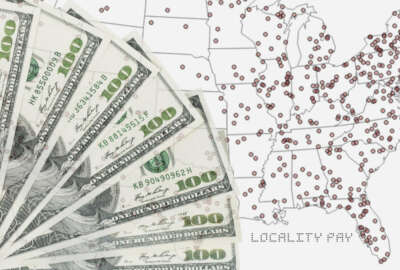
OPM to create a new locality pay area, expand another
The Office of Personnel Management will propose new regulations establishing Des Moines, Iowa, a new brand new locality pay area. The move will impact at least ...
The Office of Personnel Management is taking steps to create another new locality pay area and expand an existing one.
OPM on Friday will propose new regulations establishing Des Moines, Iowa, as a brand new locality pay area.
The new locality pay area will be final once OPM completes the regulatory process and the president sets new rates for Des Moines, likely near the end of this year.
Federal employees in Des Moines should see new locality pay rates starting the first day of the first applicable pay period in January 2021.
OPM’s proposed regulations will be open for comment for 30 days starting on July 10.
The addition of Des Moines would bring the total number of locality pay areas to 54, including “rest of U.S.,” a term used to describe the federal employees who don’t work within any of the other 53 distinct areas.
The president’s pay agent, a body that consists of the Labor secretary, the OPM director and the director of the Office of Management and Budget, signed off on Des Moines as a new locality pay area back in December.
The Federal Salary Council agreed last summer to give Des Moines its own locality pay area. The council had been monitoring regions with more than 2,500 General Schedule employees and determined that Des Moines met the statistical criteria necessary to earn its own locality pay distinction.
Read more Pay & Benefits news
Beyond the addition of Des Moines, OPM will also propose an expansion of the existing Los Angeles/Long Beach, California, locality pay area to include Imperial County, California.
This move will impact the 1,860 federal employees in Imperial County who currently receive a “rest of U.S.” locality pay rate, OPM said.
Imperial County is in a unique situation, OPM said, because it sits between Los Angeles and San Diego, which both have their own separate locality pay areas. The county also shares a border with Mexico.
To meet the statistical criteria needed to earn a distinction as an “area of application” for the purposes of setting locality pay rates, single counties like Imperial County must have at least 400 General Schedule employees and an employment interchange rate of at least 7.5% with either the Los Angeles or San Diego locality pay areas.
While Imperial County does have more than 400 employees, it doesn’t meet the employment interchange rate requirements for either Los Angeles (4.67%) or San Diego (3.03%). Combining those two separate employment interchange rates, however, would quality Imperial County.
Still, OPM determined that given these particular circumstances, Imperial County should qualify, and employees there should earn the Los Angeles locality pay rate.
“We agree that, when a location is to be established as an area of application and is adjacent to two locality pay areas, the location should be included in the locality pay area with which it has the higher employment interchange rate,” OPM said.
Again pending final regulatory action, federal employees in Imperial County should begin receiving Los Angeles locality pay rates starting in January.
Read more Workforce news
It’s unclear whether federal employees will receive meaningful locality pay increases in 2021. The president’s budget proposal calls for a 1% across-the-board federal pay raise for civilian employees next year with no locality pay adjustments.
A draft 2021 budget proposal from House appropriators is silent on the topic, meaning lawmakers are essentially endorsing the president’s recommendation.
And as the number of locality pay areas increase, the share of the locality pay pie, in essence, gets smaller. Federal employees in the six locality pay areas that were added back in 2019 noticed this phenomenon and said they were disappointed the payout wasn’t higher.
“When locality pay percentages are adjusted, the practice has been to allocate a percent of the total GS payroll for locality pay raises and to have the overall cost for such pay raises be the same, regardless of the number of locality pay areas,” the OPM proposed regulations read.
Copyright © 2024 Federal News Network. All rights reserved. This website is not intended for users located within the European Economic Area.
Nicole Ogrysko is a reporter for Federal News Network focusing on the federal workforce and federal pay and benefits.
Follow @nogryskoWFED




